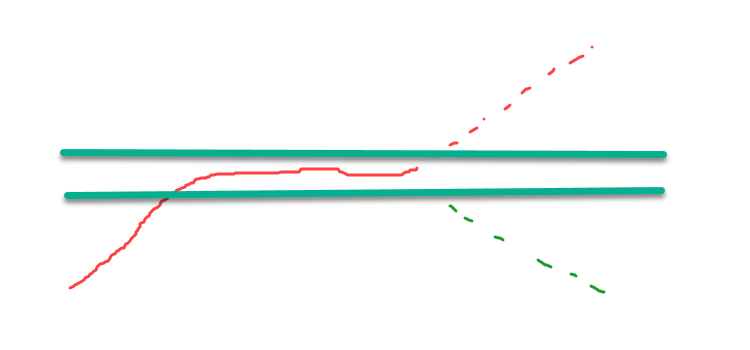Machine learning in trading: theory, models, practice and algo-trading - page 3308
You are missing trading opportunities:
- Free trading apps
- Over 8,000 signals for copying
- Economic news for exploring financial markets
Registration
Log in
You agree to website policy and terms of use
If you do not have an account, please register
as you wish, I'm not insisting.
)))
ok, let me ask a simple question: can you unambiguously estimate what you call "plateau"? - if you can, then describe the estimation so that what you have on the plateau has the maximum estimation value!!!! - is it so hard to understand, make the estimation unambiguous so that what you need to find has the maximum possible estimation.
Once again, if the maximum is not what you want when optimising, then you are using the wrong estimate.
In the tester the estimation is by eye: the thicker the green and the more part of the graph is occupied by continuous green, preferably of the same intensity, the better. And if the chart looks like a chessboard, the TS is hopeless.
We do not need an optimal model. Moreover, the very word "model" does not imply optimality. A model is a certain coarsening of reality, and the degree of coarsening is the experience, or rather the luck of the model creator.
In the tester, the evaluation is by eye: the thicker the green and the more part of the graph is occupied by continuous green, preferably of the same intensity, the better. And if the chart looks like a chessboard, the TS is hopeless.
We do not need an optimal model. Moreover, the very word "model" does not imply optimality. A model is a certain coarsening of reality, and the degree of coarsening is the experience, or rather the luck of the model creator.
you haven't answered my question.
Is it possible to unequivocally assess what you call a "plateau"?
I am not interested in theorising. There is a tester, it makes sense. There is no need to search for a plateau in the MO.
I'm not interested in theorising. There is a tester, it makes sense. In the MO the search for plateau is not worthwhile.
it's a matter of practice.
so, once again, is it possible to unambiguously estimate what you call "plateau"?
Create an evaluation that will take into account the number of hits in the specified range of "plateau" values, you will not be interested in everything above and below this plateau, so the plateau will have the maximum possible value in such an evaluation. your optimisation will be reduced to finding the maximum value of the evaluation that describes this plateau.
that's exactly what this practice is all about.
So, once again, is it possible to unambiguously assess what you call "plateau"?
Again, solid green in the tester.
Once again: solid green colour in the tester
What does this have to do with the tester and what does it have to do with the green colour?
If you answer my question, you will stop looking for this notorious plateau.
what does a tester have to do with the colour green?
If you answer my question, you'll stop looking for the proverbial plateau.
I don't need an answer to your question. If I find the answer, where will I go with it? What is the practical value of answering your question?
Where in the EA will I insert the answer to your question? Where do I put the answer to your question in the MoD?
Why ask a hundred times a question, the answer to which I do not need.
Andrew's confusing NS training with optimising its parameters, I guess.
both are kind of like optimisation, which is a bit disconcerting when a kitten has had a lot of food poured on it. there seems to be optimisation of food everywhere and it's not clear what to eat
I don't need an answer to your question. If I find the answer, where will I go with it? What is the practical value of the answer to your question?
Where in the EA will I insert the answer to your question? Where in the IO will I put the answer to your question?
Why ask a hundred times a question, the answer to which I do not need.
Here is the answer to your question (or rather to my original question to you):

change the sign of the red dashed line that is out of range, what remains in the desired interval will have the maximum score of what you are looking for, so the optimisation will be reduced to finding the MAXIMUM. what you are looking for will have the maximum possible score.
This is a simple way to convert the score you are using into a score with the maximum value lying on a plateau. but this is not the right way, the right way is to use a score that initially has a maximum at the place you are looking for.
This is true for everything, neural network training, function optimisation, strategy optimisation, everything.
Therefore, the statement "you don't need to look for a maximum, you need to look for a stable plateau" is inherently erroneous, indicating the erroneous use of estimation.